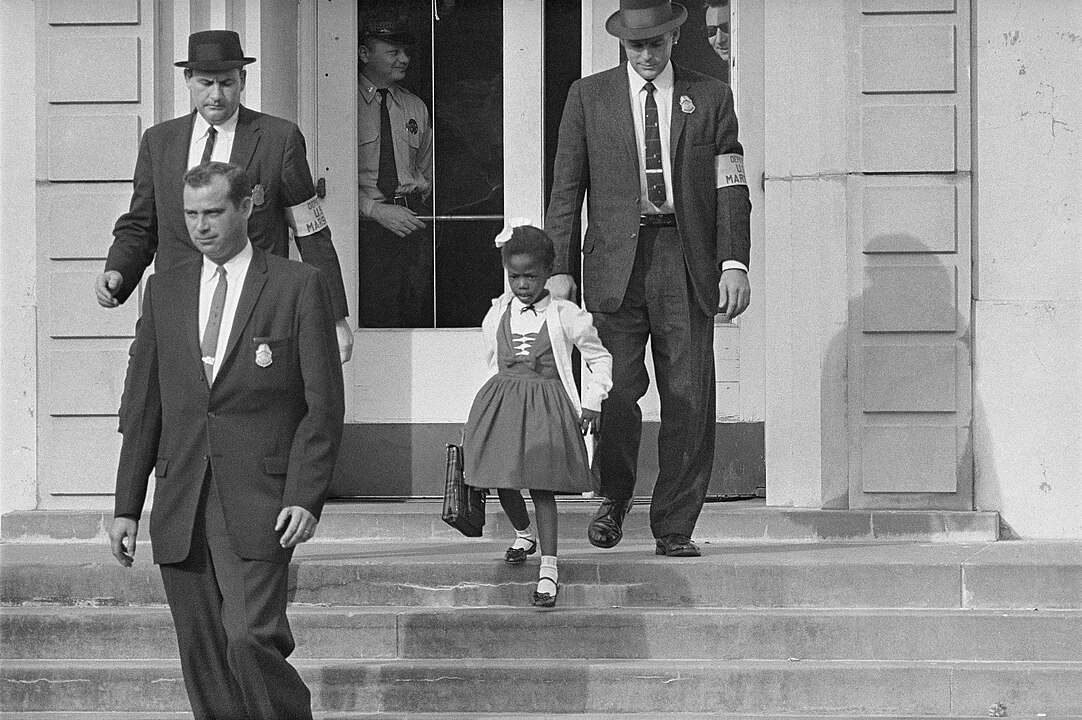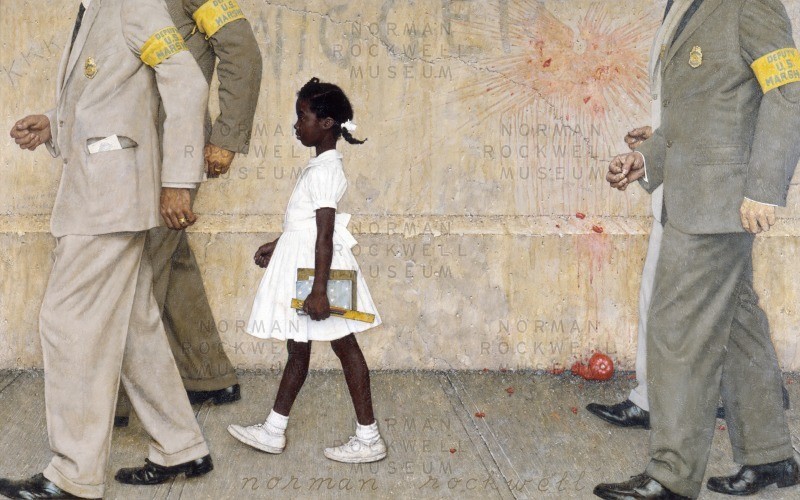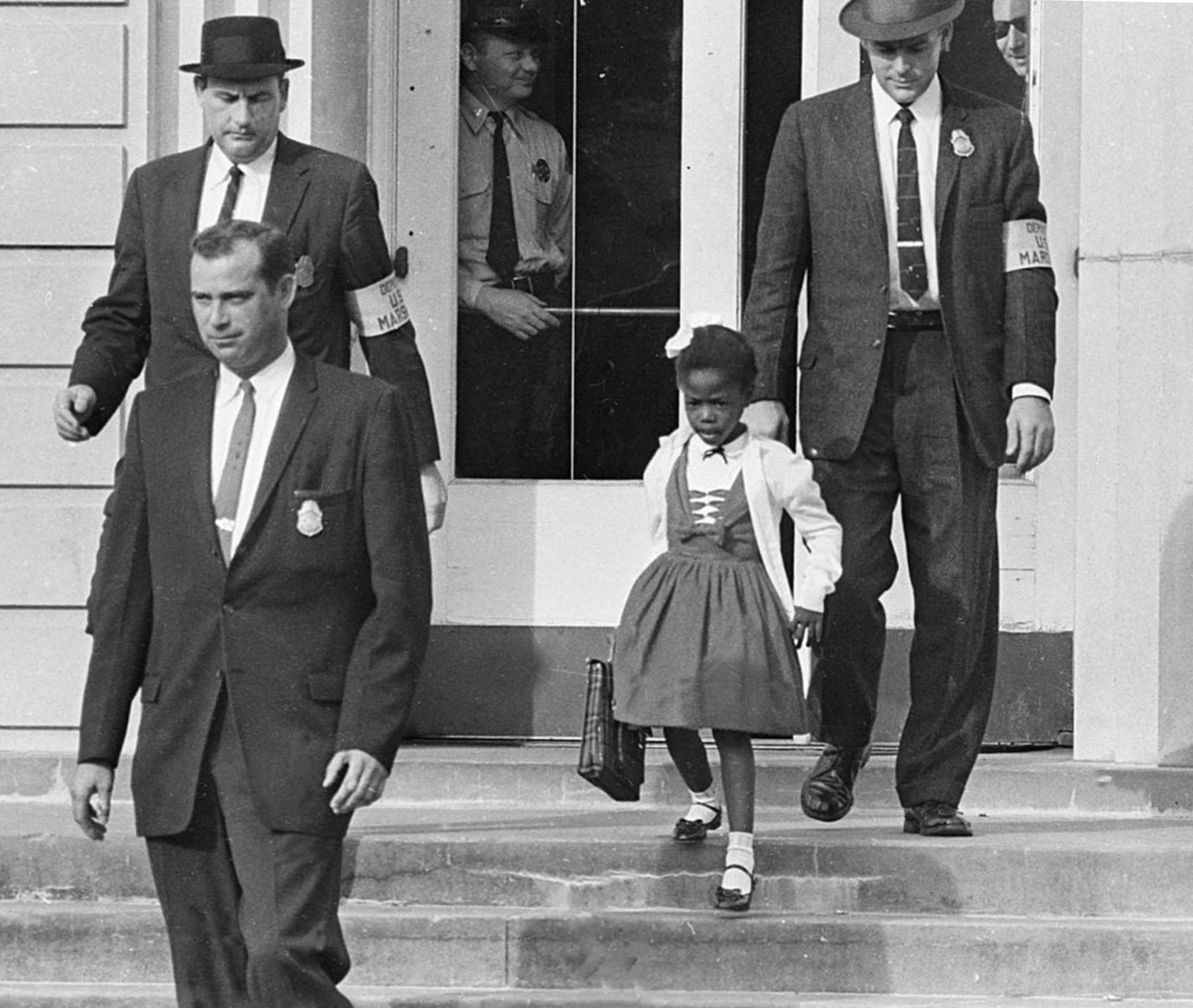Authors:
Historic Era: Era 9: Postwar United States (1945 to early 1970s)
Historic Theme:
Subject:
Winter 2025 | Volume 70, Issue 1


Authors:
Historic Era: Era 9: Postwar United States (1945 to early 1970s)
Historic Theme:
Subject:
Winter 2025 | Volume 70, Issue 1
Editor's Note: Elisabeth Griffith is the author of two acclaimed books on women's history, Formidable: American Women and the Fight for Equality: 1920–2020 and In Her Own Right: the Life of Elizabeth Cady Stanton. She has a PhD in history, and publishes a blog at Pink Threads on Substack.
On November 14, 1960, six-year-old Ruby Bridges walked through an angry crowd into a school emptied of other students.
“Driving up I could see the crowd, but living in New Orleans, I actually thought it was Mardi Gras,” Ruby recalled as an adult. “There was a large crowd of people outside of the school. They were throwing things and shouting, and that sort of goes on in New Orleans at Mardi Gras.”

Former United States Deputy Marshal Charles Burks later recalled, “She showed a lot of courage. She never cried. She didn’t whimper. She just marched along like a little soldier, and we’re all very very proud of her.”
Six years before, in May 1954, the US Supreme Court had declared unanimously that racial segregation in public schools was unconstitutional. It ordered states to integrate “with all deliberate speed.” But Brown v. The Board of Education of Topeka, Kansas, was met with “massive resistance” across the South. Senators raved about miscegenation and disrupting the social hierarchy. Mississippi’s Sen. James Eastland proclaimed that the South would not abide by or obey the ruling.

Governors ranted about states’ rights. Georgia’s Herman Talmadge vowed, “There will never be mixed schools while I am governor” and proposed closing all public schools. Virginia’s governor announced that school attendance was no longer mandatory. Parents who withdrew students would get funds for alternative schools. “White flight” academies sprung up across the region. In 1958 Virginia closed schools in Richmond, Charlottesville, and Warren County; Prince Edward public schools were shuttered for five years.
In 1956, Virginia Representative Harry Byrd circulated a Southern Manifesto, endorsing resistance to integrating any public spaces. It was signed by 19 Senators and 82 Representatives (97D, 4R) from eleven Confederate states.
Not every response was vitriolic. Tennessee Governor Frank Clement resisted demagogy. In 1955, 85 Black students attended two public schools in Oakridge. The event generated so little controversy and violence that a Knoxville News Sentinel headline read “Reporter Finds Little to Report as Negroes Attend Oak Ridge High.” Oakridge was run by the Atomic Energy Commission, part of the Manhattan Project, an “atomic city” full of scientists who did not grow up in the South. Report as Negroes Attend Oak Ridge High.”